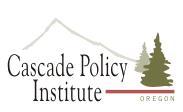 By Bob Clark, Guest writer
By Bob Clark, Guest writer
Cascade Policy Institute
The 2013 Oregon legislative session approved State Treasurer Ted Wheeler’s Oregon Opportunity Initiative for referral to voters, with a vote scheduled in November 2014. If passed by voters, this measure would have the State of Oregon issue General Obligation bonds, give all borrowed money to a newly created Student Opportunity Fund, and obligate State taxpayers to repay the bonds with interest. The Student Opportunity Fund would be invested primarily in stocks, bonds, and other securities. Theoretically, earnings from these financial investments would be used to provide college scholarships (assistance) to a select number of students who met certain qualifications.
Here are five good reasons to oppose the Opportunity Initiative. Another critique of the Opportunity Initiative is “Mining Fool’s Gold” by Nigel Jaquiss (Willamette Week, September 4, 2013).
1. The State’s General Obligation Bond indebtedness would surge.
The Opportunity Initiative begins by having the State borrow $500 million, with additional borrowing expected thereafter. $500 million represents roughly a ten percent increase in the State’s current total outstanding General Obligation debt. But just as importantly, at its extreme the Initiative could result in a doubling of the State’s General Obligation debt.
2. The interest cost to the State would be relatively expensive.
The State is expected to pay 4.5% in interest costs per year on Opportunity Initiative borrowings, with higher interest costs very possible. Currently, college students with similar qualifications to those likely targeted by the Opportunity Initiative have access to federal government loans bearing an interest rate of less than 4% per year. Furthermore, federal government-sponsored student loans are increasingly becoming deferrable and even partially forgivable. The Opportunity Initiative, therefore, fails to take full advantage of less costly federal government college assistance resources.
3. Investments for the Student Opportunity Fund may underperform.
Opportunity Initiative documentation assumes the Student Opportunity Fund will earn a 7% annual rate of return. The State Treasurer suggests 7% is a conservative assumption. In fact, the Treasurer touts an 8.7% annual rate of return on Public Employee Retirement System (PERS) investments as a proxy. However, this 8.7% rate of return likely overstates long-term investment performance, as it is calculated over a ten-year period in which the stock market had only one down year. The stock market normally posts two to three down years in a ten-year period. Even more daunting are the audited actuarial reports posted on the PERS website, which cover investment returns dating back to the year 2000 and extending through 2012, the last year audited. These PERS reports suggest that for the time period 2000-2012, the actual compound annual rate of return was only about 4.5% per year, a rate no higher than the expected state borrowing cost.
4. College assistance and education are advancing without the Opportunity Initiative.
The Opportunity Initiative is being pitched as a way to (1) make up for the stagnating allocation of State general funds to the Oregon University System and (2) support the “40-40-20” goal. (The 40-40-20 goal seeks to have 40% of adult Oregonians hold a bachelor or advanced degree, 40% hold an associate degree, and the remaining 20% hold a high school diploma.) But this pitch is wrong because (1) it ignores the fuller picture of college financial assistance by government, and (2) the 40-40-20 goal itself is inappropriate. First, total college financial assistance which includes all forms of assistance, not just that from the State legislature, is growing sharply at nearly 15% per year since the year 2000-01 (per Oregon University System Fact Books). Also, complementing this increase in government assistance is the Oregon College Savings Plan which allows families to save toward college tax-free. Second, with regard to 40-40-20, the last page of the full Opportunity Initiative documentation shows fewer than 45% of all occupations in the year 2020 are projected to require an associate or higher level degree, not the 80% implied by the 40-40-20 goal.
5. A non-taxpayer-funded alternative to the Opportunity Initiative called “Pay Forward, Pay Back” is under consideration by the Legislature.
The State Treasurer, Governor Kitzhaber, and invited parties brainstormed and hatched the Opportunity Initiative in 2011. But college students championed a different way forward for college financing called “Pay Forward, Pay Back.” Following suit, the Oregon Legislative session of 2013 passed House Bill 3472, which takes the first step in establishing and authorizing a pilot program for students to attend college “tuition-free” if they sign a binding contract to pay a percentage of their wages/salaries for a stipulated period of time following graduation. In the case of “Pay Forward, Pay Back,” colleges could leverage student contract commitments by issuing revenue bonds, or even by incorporating and selling shares, so as to initiate the financing of free tuition pathways. What’s more, Oregonians at large would not be on the hook via taxation or reduced public services for interest costs, principal repayment, or failed investment returns.
The five reasons above to oppose the Opportunity Initiative should be more than enough for informed voters to vote “No” on this ill-conceived measure in November.
Bob Clark holds a Master of Science degree in economics from Portland State University. He has worked as a Senior Economist for the Public Utility Commission of Oregon and as an economist for the Bonneville Power Administration. Mr. Clark is a guest contributor for Cascade Policy Institute, Oregon’s free market public policy research organization.
Disclaimer: Articles featured on Oregon Report are the creation, responsibility and opinion of the authoring individual or organization which is featured at the top of every article.

